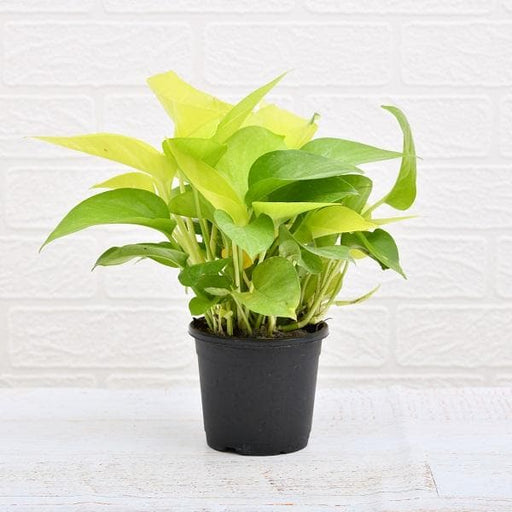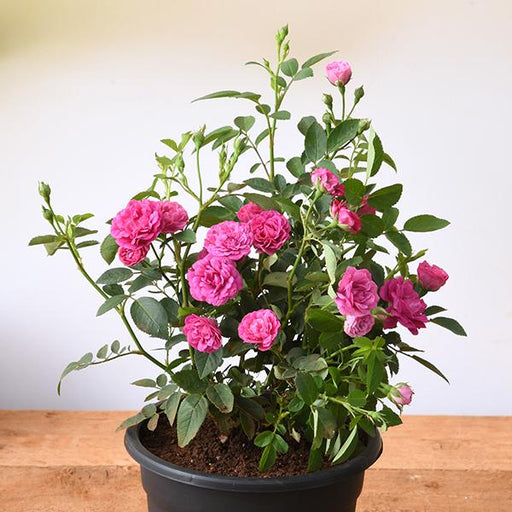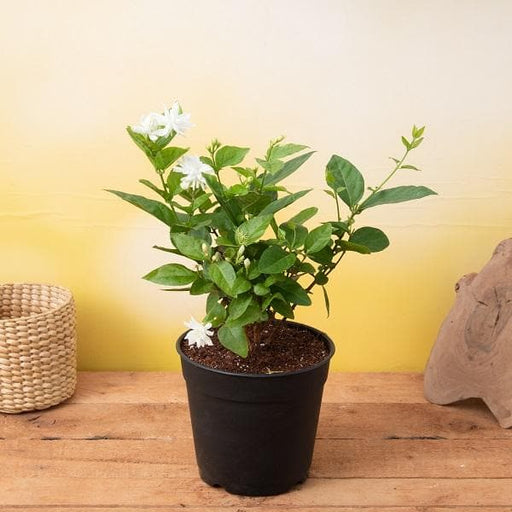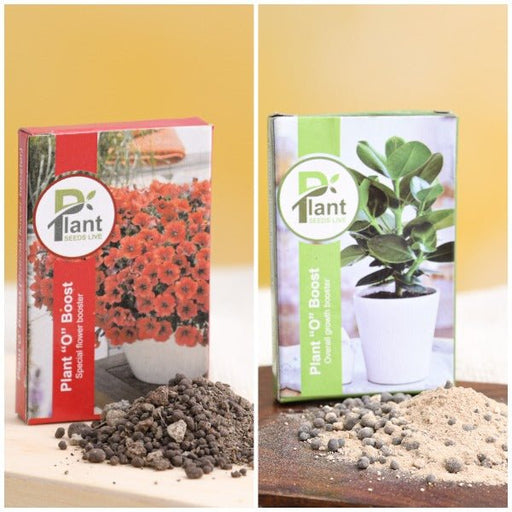
Callicarpa macrophylla
(MRP Inclusive of all taxes)
- Shipping ₹79 for entire order
- Dispatch in 7 days
- Country of origin: India

(MRP Inclusive of all taxes)
 Save 29%
Save 29%
Air Purifier Money Plant with Pot The Air Purifier Money Plant, also known as Pothos or Epipremnum aureum, is a stunning indoor plant that...
View full details
 Save up to 15%
Save up to 15%
Peace Lily, Spathiphyllum - Plant The Peace Lily, scientifically known as Spathiphyllum, is a stunning houseplant celebrated for its elegant white...
View full details
 Save 25%
Save 25%
Jasminum sambac, Mogra, Arabian Jasmine - Plant Jasminum sambac, commonly known as Mogra or Arabian Jasmine, is a fragrant flowering plant...
View full details
 Save 18%
Save 18%
Combo Constituents Includes the Parijat Tree (Night-Flowering Jasmine), a culturally significant plant with fragrant flowers. Description The Pari...
View full details
 Save 25%
Save 25%
Miniature Rose, Button Rose (Any Color) - Plant The Miniature Rose, also known as the Button Rose, is a charming and compact flowering plant that ...
View full details Save 25%
Save 25%
Damascus Rose, Scented Rose (Any Color) - Plant The Damascus Rose, also known as Rosa damascena, is a timeless symbol of beauty and romanc...
View full details
 Save 17%
Save 17%
Beautiful Fragrant Mogra, Arabian Jasmine Plant with Pot The Beautiful Fragrant Mogra, also known as Arabian Jasmine (Jasminum sambac), is...
View full details Save 15%
Save 15%
Pack of Vermicompost and Neem Cake for House Plants Transform your indoor garden with our premium Pack of Vermicompost and Neem Cake, spec...
View full details
Pack of Plant Growth and Flower Boosters Unlock the full potential of your garden with our Pack of Plant Growth and Flower Boosters! This ...
View full details Save 38%
Save 38%
Combo of Jeevamrut and Neem Raksha for Easy Growth and Protection of Houseplants Transform your indoor garden with our exclusive combo of ...
View full details Save 22%
Save 22%
Plant Nutrients Kit (Pack of 16) for a Healthy Garden Transform your garden into a lush paradise with our Plant Nutrients Kit, featuring 1...
View full details Save 16%
Save 16%
Combo of Top Plant Fertilizers Elevate your gardening game with our exclusive Combo of Top Plant Fertilizers, featuring two bags of premiu...
View full details Save 24%
Save 24%
Pack of 4 Additives to Make Soil Healthy and Nutrient Rich Transform your garden into a thriving ecosystem with our Pack of 4 Additives de...
View full details Save 30%
Save 30%
Transform your gardening experience with our premium Combo of Perlite and Vermiculite. This unique blend is designed to enhance soil aeration and ...
View full details Save 27%
Save 27%
Combo of 2 Vermicompost and Cocopeat - Enrich Your Soil Naturally! Transform your garden into a thriving ecosystem with our Combo of 2 Ver...
View full details
 Save 35%
Save 35%
Best 6 Plants for Perfect Indoor Garden Transform your living space into a lush oasis with our curated collection of the Best 6 Plants for a...
View full details
 Save up to 50%
Save up to 50%
Mini Succulent Garden Pack Transform your space with our Mini Succulent Garden Pack, featuring a delightful collection of 4 any variety beautiful s...
View full details
 Save 30%
Save 30%
5 Best Fragrant Plants Transform your garden or indoor space into a fragrant paradise with our curated selection of the 5 Best Fragrant Plants. Th...
View full details
 Save 24%
Save 24%
Set of 2 Bonsai Looking Grafted Adeniums Transform your indoor or outdoor space with our exquisite Set of 2 Bonsai Looking Grafted Adenium...
View full details Save 45%
Save 45%
Top 4 Die Hard Succulents Pack Transform your indoor or outdoor space with our Top 4 Die Hard Succulents Pack, featuring a curated selecti...
View full details
 Save 30%
Save 30%
5 Best Indoor Plants Pack Transform your living space into a lush oasis with our '5 Best Indoor Plants Pack.' This carefully curated collection fe...
View full details
 Save 25%
Save 25%
Set of 4 Evergreen Air Purifier Plant Pack Transform your indoor space into a lush, green oasis with our Set of 4 Evergreen Air Purifier Pla...
View full details| SrNo | Item Name |
|---|---|
| 1 | Callicarpa macrophylla |
Callicarpa macrophylla, commonly known as the large-leaved beautyberry, is a deciduous shrub native to the subtropical regions of Asia. This stunning plant is renowned for its vibrant clusters of purple berries that appear in late summer and persist into fall, creating a striking contrast against its lush green foliage. With its broad, ovate leaves and graceful arching branches, Callicarpa macrophylla adds a touch of elegance to any garden or landscape.
As a member of the Verbenaceae family, this shrub thrives in well-drained soils and can reach heights of up to 6 feet. Its unique aesthetic appeal and ecological benefits make it a favorite among gardeners and wildlife enthusiasts alike.
Callicarpa macrophylla stands out for its exceptional ornamental value and its role in supporting local ecosystems. The vibrant berries attract various bird species, providing a vital food source during the colder months. Additionally, its lush foliage offers shelter for small wildlife, making it an excellent choice for environmentally conscious gardeners.
Furthermore, this shrub is relatively low-maintenance, making it accessible for both novice and experienced gardeners. Its adaptability to different soil types and conditions enhances its appeal, allowing it to thrive in diverse environments.
One of the most remarkable features of Callicarpa macrophylla is its stunning berry display. The bright purple fruits not only add visual interest but also have a unique ability to persist on the plant long after the leaves have fallen. This characteristic makes it a focal point in winter landscapes, providing color and texture when most other plants are dormant.
Additionally, the shrub's broad leaves can grow up to 12 inches long, contributing to its lush appearance and making it an excellent choice for creating privacy screens or hedges.
Callicarpa macrophylla plays a significant role in promoting biodiversity. By providing food and shelter for various bird species and pollinators, it contributes to the health of local ecosystems. Its ability to thrive in different soil types also aids in soil stabilization, reducing erosion and promoting a balanced environment.
If you think caring for a Callicarpa macrophylla is like raising a teenager, think again! This tree thrives on a little TLC, but it’s not asking for much. Just ensure it gets well-drained soil, a sprinkle of sunlight, and a drink of water when it’s thirsty. Pruning? Only if you want to keep it looking sharp and stylish. Remember, it’s not just a tree; it’s a statement piece for your garden!
Fasten your seatbelts because the Callicarpa macrophylla is not one to dawdle! This tree can grow up to 10 feet tall in just a few years, making it the overachiever of the plant world. It’s like the kid in class who finishes their homework in record time. Just give it the right conditions, and watch it shoot up like it’s in a race!
Who knew a tree could throw a party? The Callicarpa macrophylla does just that with its vibrant purple berries that appear in late summer. These little gems are not just eye candy; they attract birds and other wildlife, turning your garden into a bustling social hub. Just don’t expect to see them for long; the birds have a knack for cleaning up the buffet!
If you want your Callicarpa macrophylla to thrive, it’s all about the soil, darling! This tree prefers well-drained, loamy soil that’s rich in organic matter. Think of it as a spa day for your plant. It’s not too picky, but it definitely doesn’t want to sit in soggy shoes. So, give it a cozy bed, and it’ll reward you with lush foliage and stunning berries.
Sunbathing is not just for humans; the Callicarpa macrophylla loves to soak up the sun too! This tree prefers full sun to partial shade, so make sure it’s not stuck in the shadows of your garden. Think of it as a sun-loving diva that needs its daily dose of rays to flourish. A little sunlight goes a long way in making it the star of your landscape!
Pruning a Callicarpa macrophylla is like giving it a stylish haircut. You want to keep it looking fabulous without going overboard. Late winter or early spring is the best time to snip away any dead or crossing branches. Just remember, a little trim can enhance its shape and encourage more fruit production. It’s all about that fresh look!
Pests? Not on this tree’s watch! The Callicarpa macrophylla is relatively pest-resistant, but that doesn’t mean it’s invincible. Keep an eye out for aphids and spider mites, which can be pesky little intruders. A gentle spray of insecticidal soap or neem oil can send them packing. Think of it as a bouncer for your garden party!
If you’re looking to add a splash of color and texture to your landscape, the Callicarpa macrophylla is your go-to tree. Its stunning purple berries and lush green leaves make it a showstopper in any garden. Use it as a focal point, a hedge, or even a backdrop for your flower beds. It’s like the versatile actor of the plant world, ready for any role!
This tree is not just a pretty face; it’s tough too! The Callicarpa macrophylla thrives in USDA hardiness zones 6 to 9, making it a resilient choice for many gardeners. It can handle a bit of cold and heat, so it’s like that friend who can adapt to any situation. Just plant it in the right zone, and it’ll flourish like a champ!
Pairing the Callicarpa macrophylla with the right companions can elevate your garden game. Think of it as creating a fabulous ensemble cast! It loves to hang out with other flowering shrubs like hydrangeas and azaleas. Together, they create a vibrant tapestry of colors and textures that will have your neighbors green with envy!
Want to spread the love? Propagating Callicarpa macrophylla is easier than you think! You can take softwood cuttings in late spring or early summer and watch them root like magic. It’s like cloning your favorite plant without the sci-fi drama. Just give them some time, and soon you’ll have a mini forest of these beauties to enjoy!
Callicarpa macrophylla, also known as the large-leaved beautyberry, is a deciduous shrub that flaunts stunning purple berries and large leaves. It’s like nature’s confetti, perfect for adding a pop of color to your garden. Plus, it’s a favorite among birds, making it a social butterfly in the plant world!
This beautyberry prefers the warm embrace of USDA zones 6 to 9. You’ll find it thriving in well-drained soil, basking in partial to full sun. Think of it as the diva of the garden, demanding just the right conditions to show off its vibrant berries and lush foliage!
Callicarpa macrophylla can reach heights of 4 to 8 feet, making it a delightful mid-sized shrub. It’s like the Goldilocks of plants—not too tall, not too short, just right for adding structure to your landscape. Perfect for those who want a little drama without the towering heights!
This shrub puts on its floral show in late summer, typically around July to August. The delicate pinkish-lavender flowers are like the opening act before the main event—the dazzling purple berries that follow. It’s a garden performance you won’t want to miss!
Caring for Callicarpa macrophylla is a breeze! Just provide it with well-drained soil, moderate watering, and a sprinkle of fertilizer in spring. Prune it back in late winter to encourage new growth. It’s like giving your shrub a fresh haircut—everyone loves a good makeover!
While no plant is entirely deer-proof, Callicarpa macrophylla is often left alone by these four-legged munchers. Its slightly bitter taste seems to deter them, making it a savvy choice for gardens in deer-prone areas. It’s like the plant equivalent of wearing a “Do Not Disturb” sign!
Absolutely! Callicarpa macrophylla can thrive in containers, provided they have enough space for those roots to stretch. Just ensure good drainage and regular watering. It’s like giving your shrub a cozy apartment—perfect for patios or small gardens!
This shrub is a wildlife magnet! Birds flock to its vibrant purple berries, making it a popular dining spot. Butterflies and bees also love its flowers, turning your garden into a buzzing hotspot. It’s like hosting a garden party where everyone’s invited!
Fear not! Callicarpa macrophylla is not considered invasive. It plays nicely with other plants and won’t take over your garden like some unruly guests. Just give it a little space, and it will happily coexist, adding beauty without the drama!
Yes, you can propagate Callicarpa macrophylla through softwood cuttings in late spring or early summer. It’s like cloning your favorite plant—just snip, plant, and watch it grow! Soon, you’ll have a mini army of beautyberries to brighten your garden.
Beyond its ornamental charm, Callicarpa macrophylla can be used for erosion control and as a natural privacy screen. Its berries are also edible (though a bit tart), making it a versatile addition to your garden. It’s like the Swiss Army knife of shrubs—functional and fabulous!